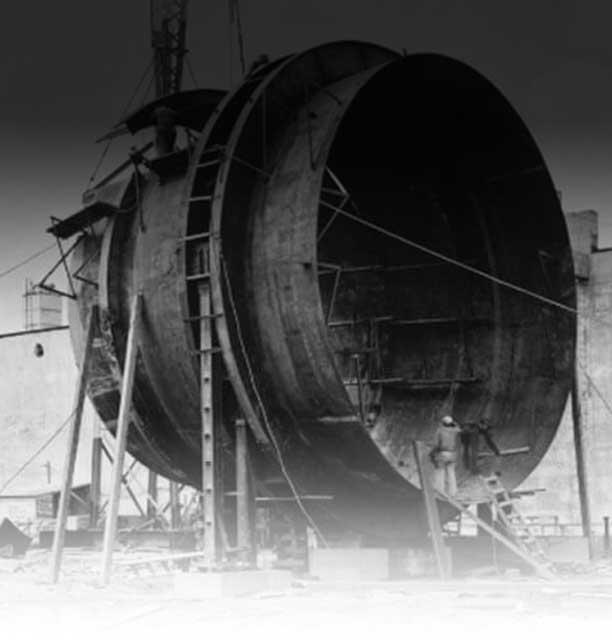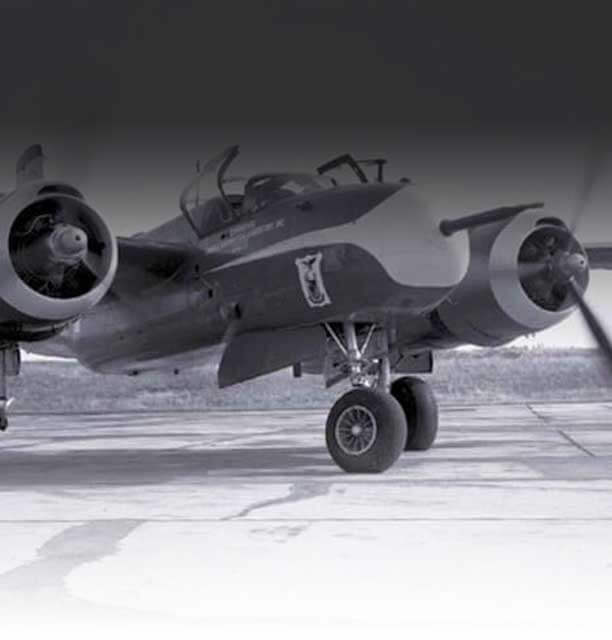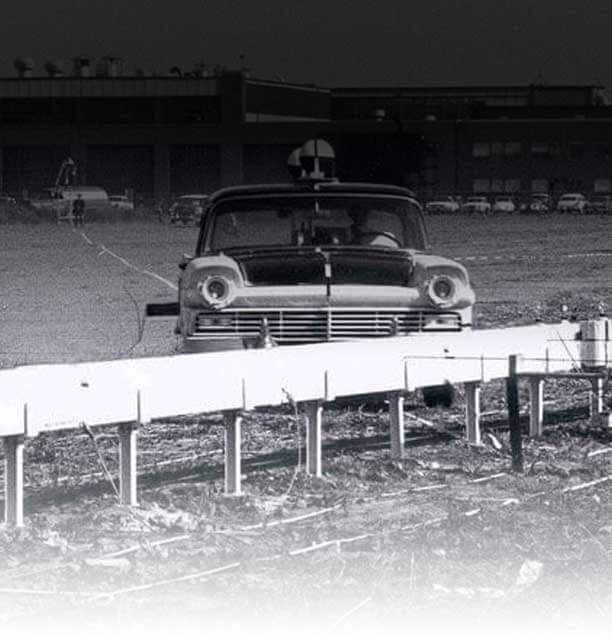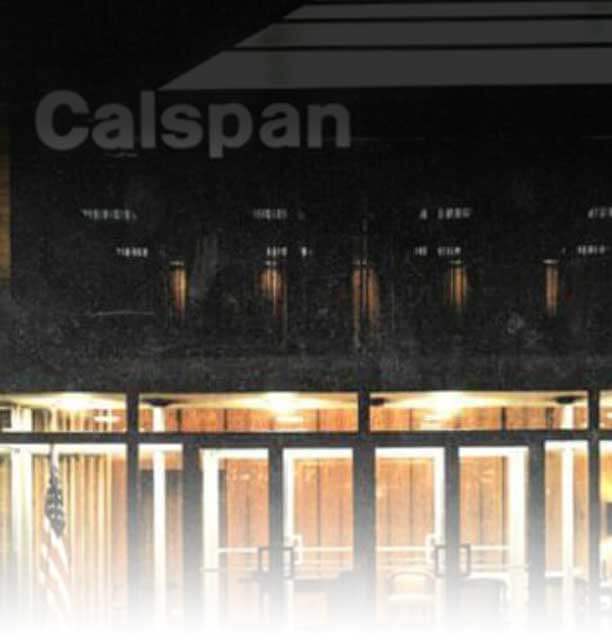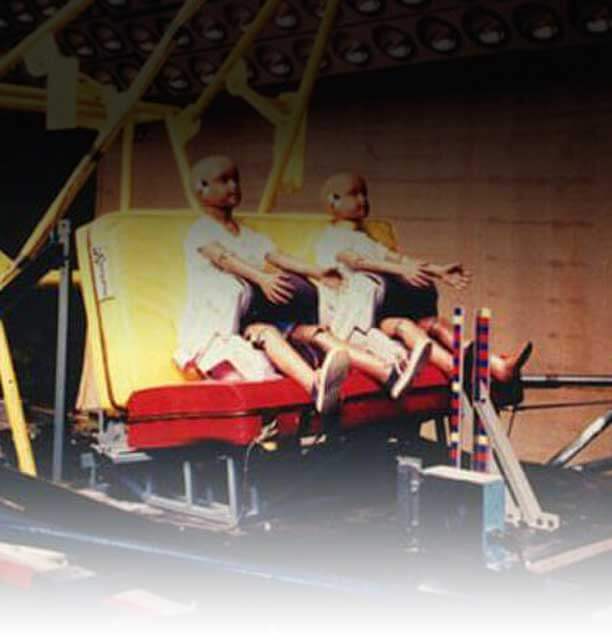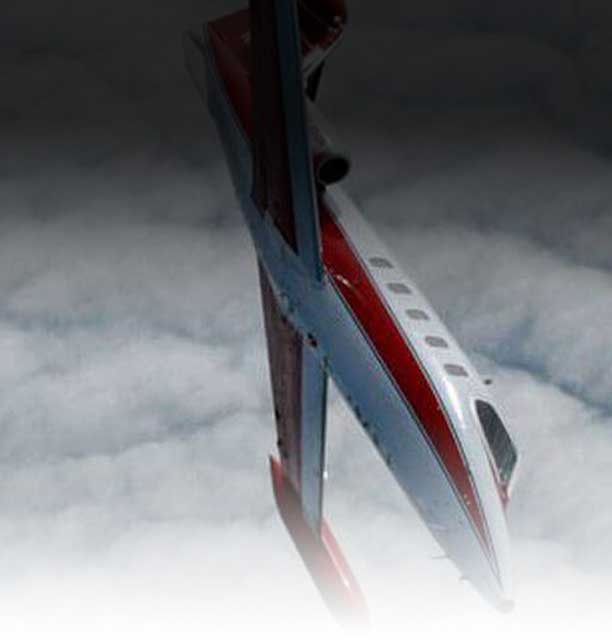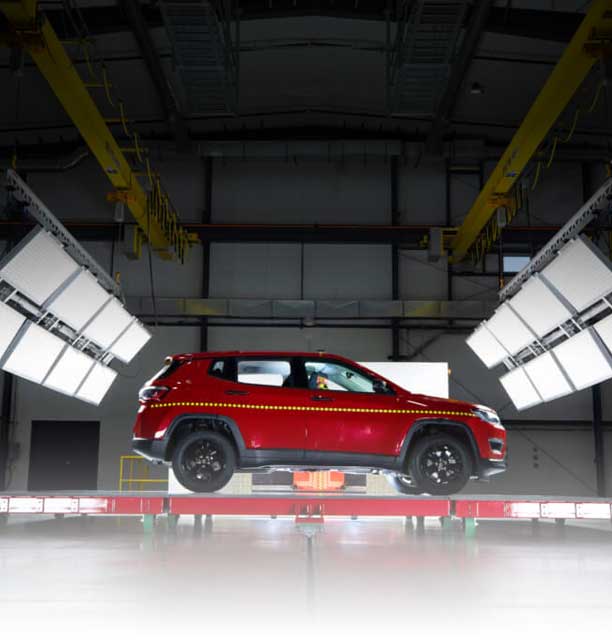1950s
75 YEARS OF TESTING THE FUTURE
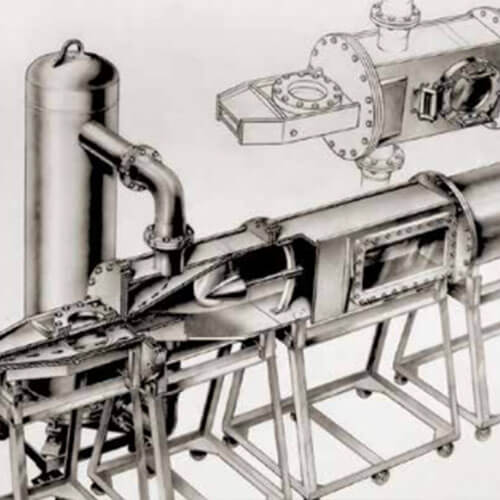
1951
C.A.L. develops and operates a 45-foot hypersonic shock tunnel capable of 10,000 mph.
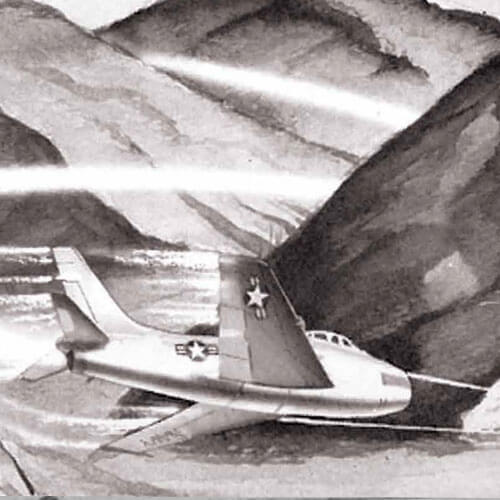
1951
The USAF Tactical Air Command requested C.A.L to undertake a research program to improve survivability, operational safety, and weapon effectiveness of our tactical air forces. C.A.L. created the Tac-Air Projects Group, to work on program ‘Buffalo Bill.’

1952
C.A.L. variable stability aircraft, Beech C-45 aircraft with a 3 axis pitch, roll, and yaw system and Douglas B-26 with an initial single-axis pitch system, were used in U.S. Air Force programs. C.A.L continued to develop several generations of variable stability aircraft with increasing complexity and simulation accuracy.
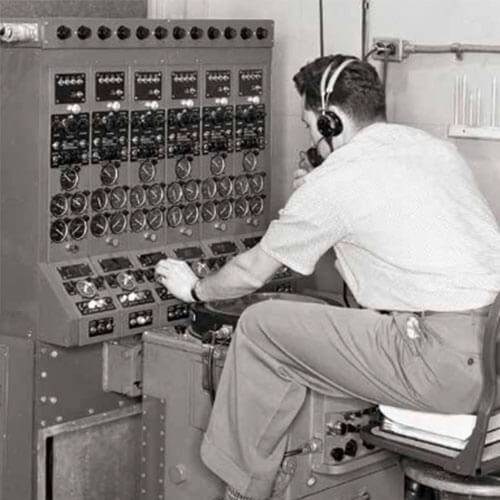
1953
C.A.L. develops new computing equipment to control Navy fighter planes that successfully intercepts attacking bombers.

1953
C.A.L. researched the aerodynamic problem of controlling a missile fired with hundreds of miles per hour of backwards airspeed in the Bomber Defense Missile Program.

1953
Thick Man and Half Pint were developed proportional in weight and dimensions of the average human male and six year old child respectively. They were placed inside an automobile to determine the effect of sudden decelerations on the human body.
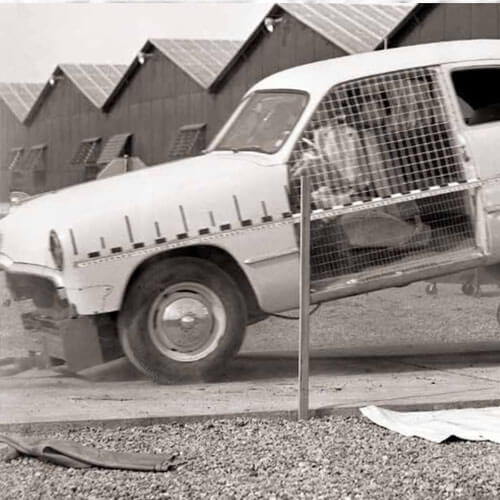
1953
Early impact automobile testing: a car was accelerated to 20 mph, when it got to the end of a 200 foot run, a steel cable attached to the frame of the car pulled tight and the car rapidly came to a stop.
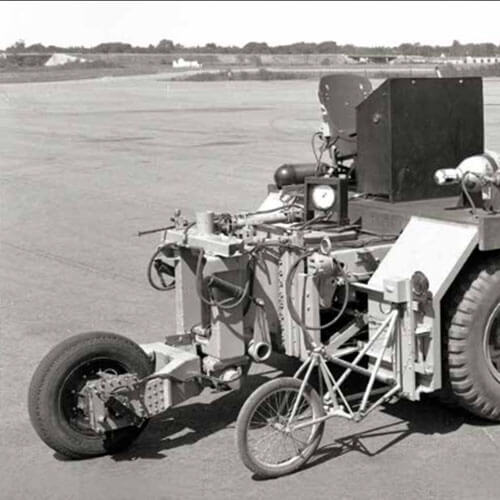
1953
The Full-Scale Division of C.A.L formed with the Flight Research Department and the Vehicle Dynamics Department. A tire-testing apparatus was developed for the USAF to test aircraft tires and to measure automobile tire behavior for tire manufacturers such as Dunlop, Goodrich, Goodyear, and Firestone.
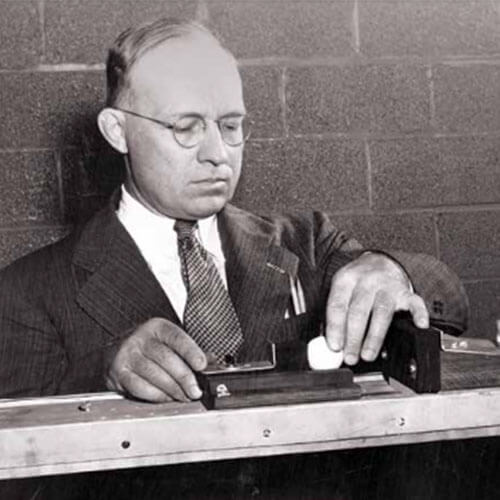
1954
Edward Dye performed tests using eggs to represent the delicate nature of the human head. An egg was placed in a carriage that would swing back and forth like a pendulum. The carriage could be pulled backward by various distances producing different speeds and in its forward swing it would strike a concrete wall.
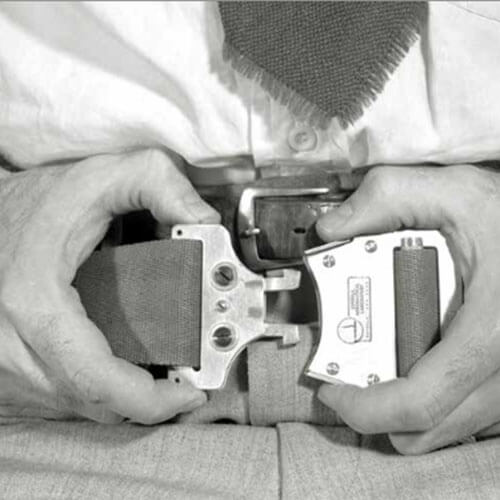
1954
Ed Dye and his fellow researchers contract with Hickok Manufacturing Company in Rochester NY for seatbelt retrofit kit installations for automobiles.
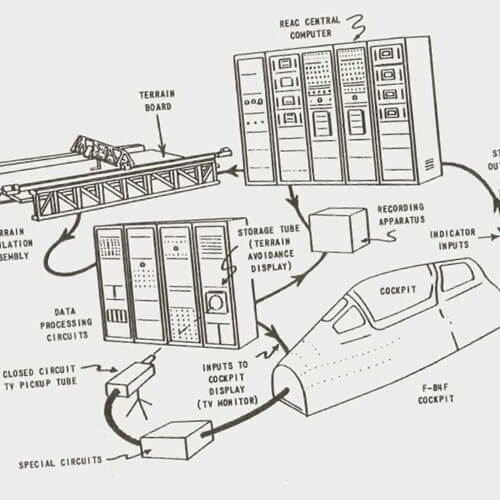
1955
USAF Tactical Air Command contract includes simulator studies for avoidance of terrain during low level navigation and attack, effects of turbulence on pilots, evaluation of radar displays, and aerodynamic limits of low-level flight.
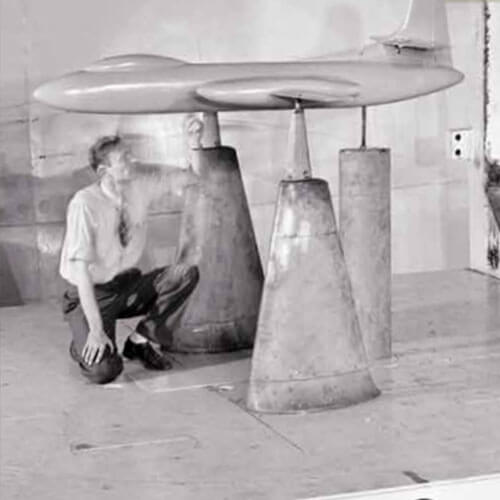
1955
4,732 hours: Calspan’s wind tunnel recorded its highest testing utilization of the era.
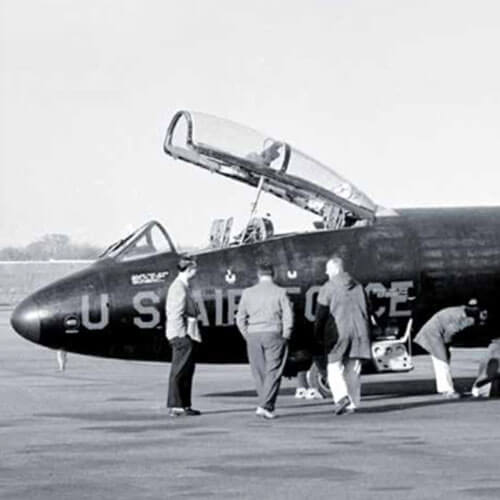
1955
An Air Force ETB-26B, serial number 44-346533 flew 50 hours from March until August in the ‘Red Tavern’ task of the Buffalo Bill program. The Air Force then provided a higher speed B-57B Canberra aircraft as the testbed, evaluating low altitude flying under automatic control and using radar and radio altimeter sensors internal to the airplane.

1955
C.A.L. was issued a contract by the USAF Office of Scientific Research to build a small-scale concept facility to explore the mechanical problems and gas dynamics issues in a full-scale Wave Superheater.
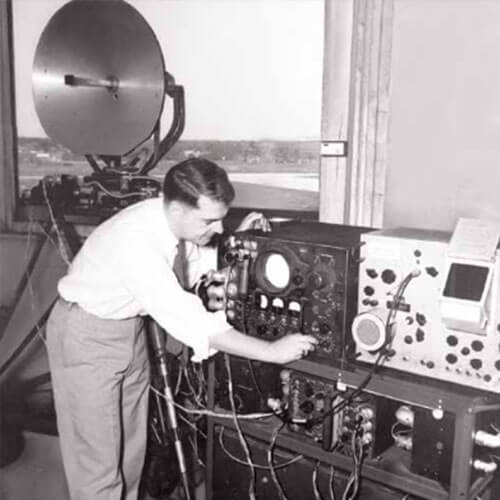
1956
C.A.L research indicated that thunderstorms, hailstorms, and snow squalls are identifiable using Doppler radar.
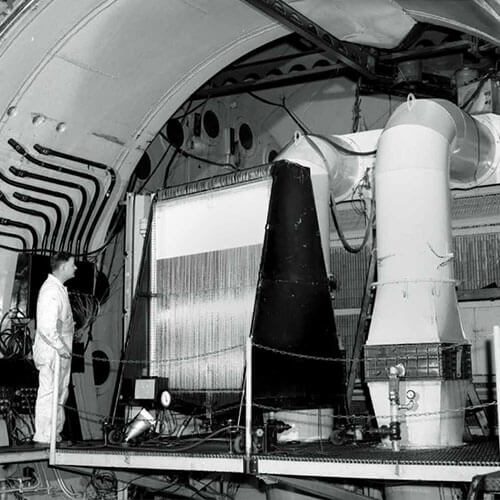
1956
The tunnel was changed to provide a reduced size 8' by 8' test section with perforated walls to alleviate shock waves reflecting off the walls of the test section at transonic speeds. A 13,000 HP motor was added to pull the air out of these perforations in the tunnel wall. The transonic wind tunnel was capable of testing for Mach numbers up to 1.30. A one square foot supersonic tunnel complemented the transonic tunnel by offering high-speed testing up to Mach 2.8.

1957
C.A.L receives a contract from the U.S. Weather Bureau to develop a tornado warning device. A was successful in detecting a storm approaching in 1958.
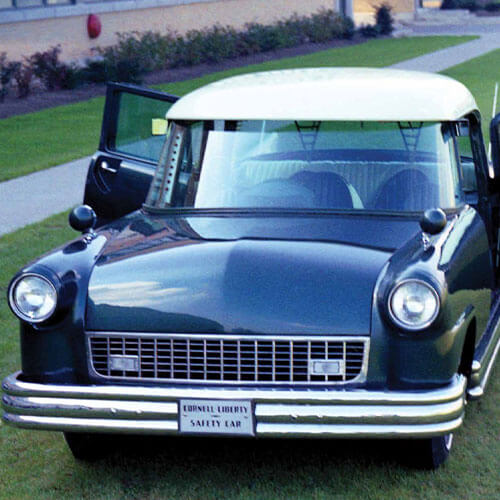
1957
The ‘Cornell-Liberty Mutual Safety Car’ made its public debut. Externally, this vehicle did not look much different than other cars of that era. However, the structure, as well as the interior, were quite different. Theoretically, there was nothing in the vehicle that your head could strike, no matter how violent the crash.

1957
Funding received for the project ‘Perceiving and Recognizing Automaton’ (PARA) at C.A.L., from the Office of Naval Research. The goal was to develop a machine, called a ‘perceptron,’ that could sense, remember, and respond like the human mind. An experimental machine, Mark I Perceptron, was developed and trained to identify patterns. This electromechanical device demonstrated an ability to learn from prior exposure to patterns.
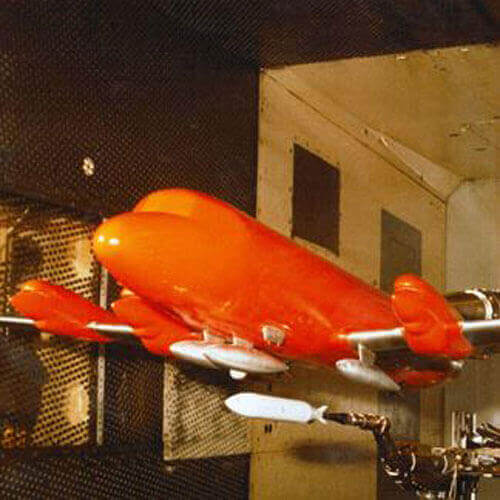
1958
C.A.L. developed the first ‘Captive Trajectory Simulation’ (CTS) system to provide its wind tunnel customers with information on the aerodynamic forces and moments that result from the body, wings, and control surfaces of various airplanes, missiles, or other objects that move through the air. It is important to know how these objects dropped or jettisoned from airplanes will move after they separate. It is important to be able to predict the movement of a separated store from the carrier airplane to reduce the risk of the follow-on flight testing.
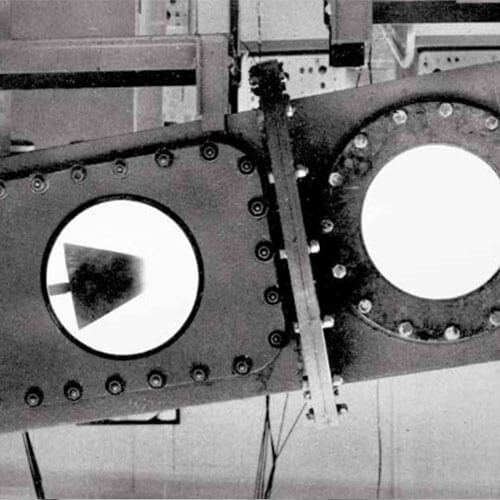
1959
A 3-foot square test section shock tunnel, capable of testing from Mach 5 to 10 is built.
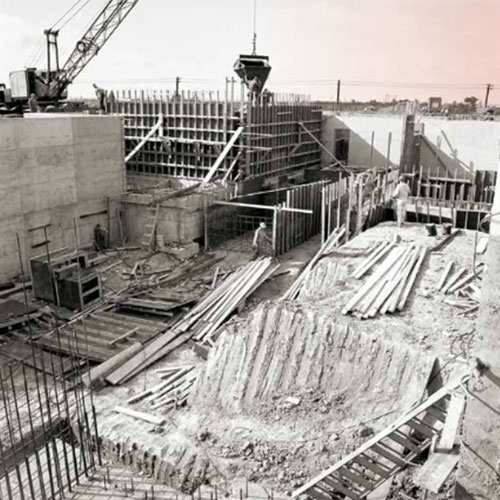
1959
Construction of the full scale facility on the Genesee Street campus was initiated. A concrete block main building with the first floor underground was built to contain the rotor, drive motor, pebble heaters, gas nozzles, associated plumbing, and a control room. Two large spheres were constructed as containment vessels for the helium driver gas.
